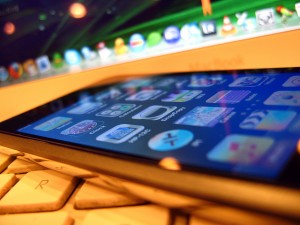
Just a few hours ago, many of us lurked the Internets, like a bunch of goons, drooling over the prospects of Apple’s “big announcement” regarding the iPhone-5-release-but-actually-it’s-the-iPhone4S-instead-ha-we-fooled-you!-now-get-back-to-work!
Indeed.
What is the source of that widespread anticipation? A phone? Nah. How does Apple manage to leverage the loyalty of so many customers and fans in order to create such a buzz around a new product? A new idea?
And, more importantly: How can we create that hype in our classrooms?
I’m not talking about hype without justification, I’m talking about genuine enthusiasm about the “big reveal.” Hype surrounding what is yet to be learned… about what is yet to come… about what I have yet to discover I can understand and do.
How do our teachers help students develop a legitimate desire to learn more, do more, say more, be more? How do we encourage our teachers to design learning opportunities that leave students wanting more at the end of the school day? When parents ask, “What did you do in school today?”, don’t we want students belting out accolades about the day’s projects, debates, research, and collaborative interactions?
Yes. We want that. Right now, many of our students leave our schools empty-headed at the end of the day. They’re not pushed in their thinking. They’re not busting at the seams thinking about the next big reveal, or how they can get ahead of their learning to be the one who shouts, “Spoiler Alert!” before moving ahead with an idea before the “pacing guide” calls for it. (Did you ever witness that? When a teacher halts the class discussion because tomorrow’s concept is covered too soon? Painful.)
I don’t really have any answers for how we accomplish this, and I’m sure it’s different for every classroom and every school. I think engaging kids is #1. I think knowing how to design learning opportunities that embrace students’ passions and interests and allowing them to interact with peers within their own schools and with others around the world is key. We must allow them to use technology in order to facilitate learning experiences, and our teachers must partner with students to help support them, to challenge their assumptions, and to show them that they’re capable of greatness.
Apple disappointed many today, and while I’m not here to criticize their strategies (I love my iPhone and all things Apple), we need to instill in our organizations an intense need to bring on the hype. Get kids excited. Get teachers excited. Get parents and community members and board members excited and wanting more.
Then deliver.
